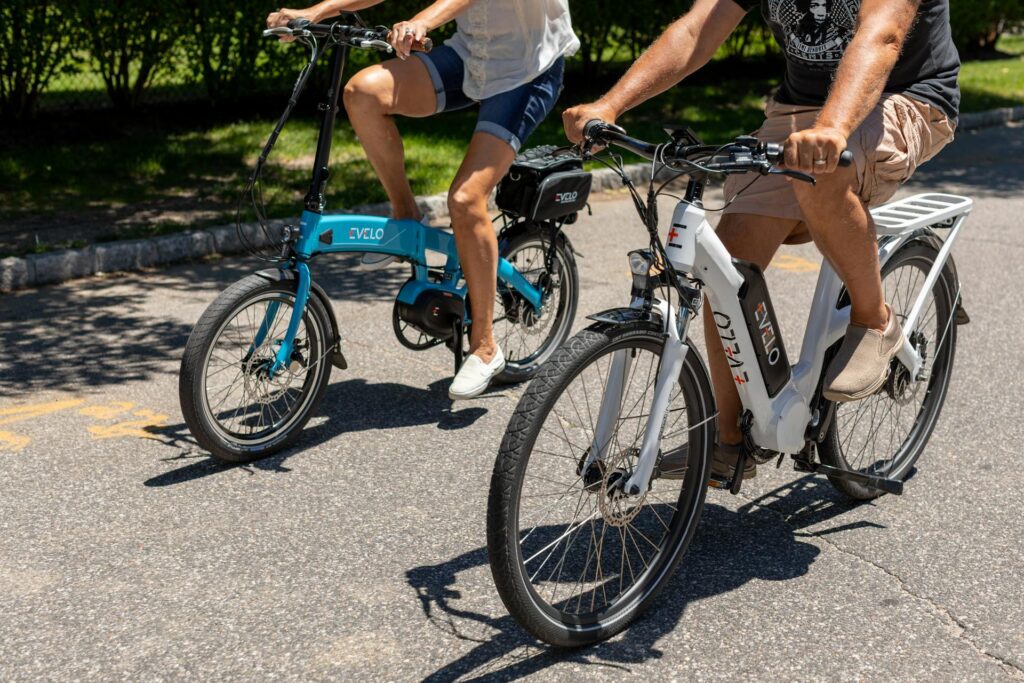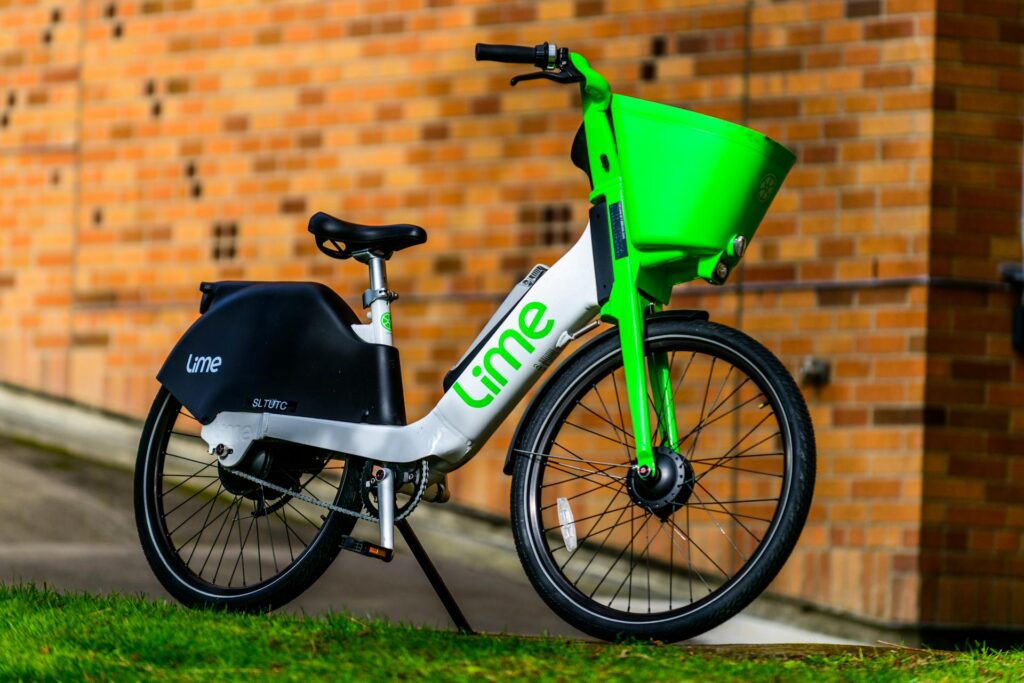
Rain or shine or sleet or snow, Angela Olson of BikeMN provides education to help local residents commute through the rough weather of Minneapolis, Minnesota without relying on cars.
It is commonly known that cars are massive contributors to carbon emissions, but even in compact urban areas, people choose cars over more environmentally friendly and less expensive alternatives, such as biking.
There are many challenges when it comes to the viability of commuting on bikes. Many are discouraged by the physicality, the lack of biking infrastructure and general lack of experience.
The Bicycle Alliance of Minnesota, or BikeMN, is a non-profit that has made it their mission to encourage biking to Minnesota commuters.
The organization writes bills to change policies and ordinances to make biking easier across Minnesota.
Angela Olson, the Deputy, and Education Director of BikeMN, runs classes that educate the community on bike safety.
The organization runs programs where they train teachers on a safe biking curriculum for kindergarten to eighth grade. They also have a program for adults who have never ridden bikes before to teach them and support them as they utilize biking as a mode of transportation, says Olson.
One thing that Olson tackles as a biking educator is preparing riders to feel comfortable using their bikes as their main mode of transportation through route planning assistance.
“Your route can really affect your sense of safety,” says Olson. “So, depending on what type of infrastructure– is there a bike lane available? Do you have to cross a super busy road? I’m really empowering people to know and understand the best laws and practices.”
Olson has been biking as her main mode of transportation since she was 18-years-old. She used to live in New York City where she put in the work biking 10 miles to work every day. She is slightly embarrassed to say her commute to work in Minneapolis is only about a mile but has no complaints when it comes to commuting in the winter.
The cold and snowy winter months of Minnesota pose one of the biggest challenges for bike commuters in Minneapolis. Bike lanes on the road disappear in place of snowbanks, says Olson.
BikeMN also has classes in the wintertime that help riders adjust to riding through snow and slush.

“Snow removal is a constant battle for our city,” says Olson. “Practicing in the snow is really helpful if you want to ride in the winter.”
The other challenge of winter riding is the cold, something that Olson is all too familiar with. When she was younger, and less experienced, Olson made it through the winters by wearing five layers of crummy cotton gloves and a stack of hats on her head.
“Again, we’re talking about education. As long as you know what kind of gear you need, like gear makes a huge difference,” says Olson. “I don’t just mean necessarily fancy bike gear, but just having a really good pair of gloves makes an enormous difference.”
Olson first started biking as her main mode of transportation when she moved to Minneapolis to go to college. With no car, her transportation options were limited and late-night walks and bus rides did not make her feel safe.
Biking provides Olson with an independent mode of transportation that gives her the power to feel in control and safe.
It cannot be ignored that traditional bikes come with requirements of physical activity that are challenging for people.
The rise in popularity of electric bikes makes biking a viable transportation option for many.
“Ten miles on a non-electric bike can seem pretty daunting. I mean, even for me, and I’m like a lazy rider, so I don’t ride ten miles anymore,” says Olson. “But on an electric bike, ten miles was a lot more achievable.”

BikeMN has received a grant from the Metropolitan Council to run a bike commuter support program. The organization is using the grant to support local businesses in Minneapolis and St. Paul by providing them with a fleet of electric bikes.
The goal of the program is for businesses to get their employees to swap a car commute with a bike commute. Employees will be able to check out the e-bikes for free in the bike share program.
The program also includes incentives such as vouchers to local bike shops. For example, if an employee bikes to work three times in a week they get ten dollars to spend at a bike shop, says Olson.
Olson personally attests to the increased viability of her e-bike versus her traditional bike.
“I ride way more than I did in the past five years,” says Olson. “You feel like you’re riding a pegasus. Like you’re superhuman.”
Even if drivers do not want to switch over to bikes themselves, more bikes on the road means less cars, less traffic congestion and cleaner air.
“Biking and walking and rolling over driving is one of the few ways that people and individuals actually have a lot of impact. That’s like a direct, one to one, exchange,” Olson says.
These alternatives to cars that Olson promotes at BikeMN have become more viable thanks to the growing presence of micro mobility options in cities.
Micromobility transportation options are lightweight vehicles, such as bikes and scooters, that can be rented for short time use within a city.
Cities with micromobility options give those that cannot afford or take care of their own vehicle the opportunity to make greener decisions in their commutes. With micromobility options, everyone can feel like they’re riding a pegasus just like Olson.
Lime is a company that provides access to electric bike and scooter options in cities. Their electric vehicles can be recognized by their lime green color.
The company has made many leaps in the last three years to ensure that their business supports a sustainable future, says Jacob Tugendrajch, Lime’s senior manager of communications in the Americas and Asia Pacific.
Like BikeMN, Lime advocates for biking infrastructure that makes getting around by bike and scooter easier.
“Lime thrives and micromobility thrives when cities embrace getting around on two wheels, and build protected bike lanes and bike parking,” says Tugendrajch.
Lime vehicles are designed to serve people on trips under five miles, a standard distance for micromobility, says Tugendrajch. This does not mean that micromobility is only an option for short commutes.
Not everyone lives within reasonable walking distance of a bus stop or a subway, but micromobility serves as a means of connecting people to those other transportation options.
Between the large network of traditional inner-city transportation, a network of micro mobility serves the unique, short range transportation needs that were previously filled by cars.

Studies from German research institution, Fraunhofer ISI, show that Lime scooters in cities across the globe replace enough high-emission car rides to reduce more carbon emissions than they emit.
Where people would once hail a taxi, they are now hopping on more sustainable and affordable e-bikes and e-scooters.
“We pride ourselves on serving riders who are as diverse as the cities they live in,” says Tugendrajch.
Lime is also focused on ensuring that their business is a part of the sustainability solution through innovations that lower their lasting impacts on the Earth, says Tugendrajch.
Starting with the vehicles themselves, the latest, generation four, models of Lime e-scooters and e-bikes have rechargeable, interchangeable batteries. This significantly enhances the efficiency and sustainability of charging vehicles, says Tugendrajch.
This also increases the availability of charged vehicles for riders because the vehicles do not need to be taken away to be charged. Charging is as simple as changing the batteries.
The new vehicles feature modular designs that allow for individual parts to be easily swapped out and replaced without needing to be taken off to Lime’s facility.
Lime’s infrastructure is transitioning to more eco-friendly practices to decarbonize its services.
Gas powered charging and repair vans are being transitioned out to make way for electric vans. Swappable parts and batteries also open the opportunity for Lime’s e-cargo bikes to perform standard repairs and charging duties previously only possible with vans, says Tugendrajch.
To top it off, Lime powers all of their electric vehicles, warehouses and offices with locally sourced renewable energy, says Tugendrajch.
In addition to being a viable form of sustainable transportation, micromobility has strong potential to bring positive social change.
“We want to serve underserved communities and connect them to existing public transportation options,” says Tugendrajch. “We want to focus on serving communities equity, ensuring income or where people live is not a barrier to accessing Lime.”
Micromobility and biking infrastructure could be a key factor in bridging gaps in communities divided by a lack of access to necessary transportation. With micromobility options and biking infrastructure in cities, everyday people have the agency to make sustainable decisions that best serve their commutes and their communities.



